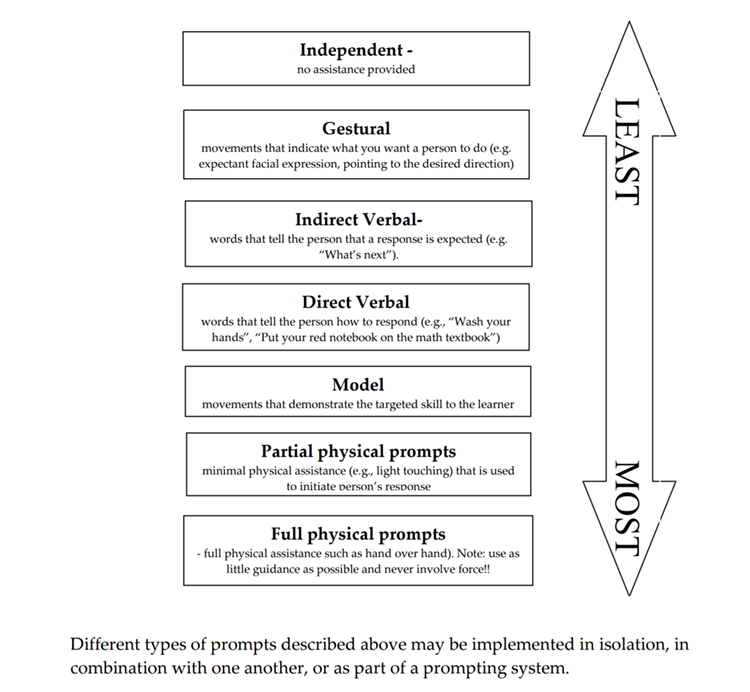Going grocery shopping, out for a meal at a restaurant, or to the movie theater can be a minefield for adults with autism, presenting many obstacles that neurotypical people do not think twice about. The difficulties that come with the unpredictability of the grocery store, the mall, or any other public space can be intimidating for many. However, community outings can also be tremendously rewarding, promote independence, and strengthen relationships between individuals and the communities that they live in. With a combination of planning and creative strategies, it is possible to reduce the stress and boost the benefits that come with community outings.
Grocery shopping in particular can be particularly stressful for adults with autism because of the numerous variables in play as well as the environment of the grocery store itself. In this article, we will specifically focus on grocery shopping as an example of a community outing that can be simplified through the use of strategies. However, many of these approaches can be applied to other types of community outings. Through creative planning, it is possible to address the obstacles that come with a trip to the grocery store (or any other public place) and boost the positive impacts of community outings.
Strategies for Successful Shopping
Lynne Soraya, author of Asperger’s Diary, a blog on the website Psychology Today, vividly describes how a trip to the grocery store can be overwhelming to the senses and mind. The bright lights of a store, the numerous displays and items, and the noises of other shoppers present stimuli that is difficult for people with sensory sensitivities to filter out. This makes it difficult to focus on the task at hand: getting and buying groceries. Soraya’s explanation of the challenges that come with grocery shopping sheds light on exactly what needs to be addressed when going to the store, making it easier to find possible solutions. However, it is important to remember that every autistic person is different and will experience the environment of a grocery store in his own unique way – no solution is universal.
The booklet Autism: A Guide for Adults Following Diagnosis lists several tips for going shopping with autism that can be tailored to the needs of an individual. The authors recommend getting familiarized with the grocery store by consistently going to the same grocery store when possible. Another recommendation is to go to the store when groceries are not needed, so one can focus on getting used to the layout of the store. This makes it easier to anticipate the challenges that come with grocery shopping because the store is a more familiar space. Smaller stores also tend to be less overwhelming, although they may be more expensive than large chain grocery stores. Going shopping during non-rush times, such as the early morning and the late evening, can also be helpful in reducing stress because there are usually less people around to deal with. With many of these strategies, planning and routine are key, so it is important to have a clear plan of action when thinking about how to increase engagement in the community.

More planning may be necessary to meet the needs of some individuals. Shannon Doty, MHAF Digital Media Manager says, “A common strategy when going shopping with an autistic family member or client is to call the store ahead of time and ask them to set aside a cart with all the needed items. The individual, and a family member or caretaker, can then arrive at the store and check out the items set aside for them, minimizing the chance of sensory overload while still gaining the benefits of being out in the community.” This strategy can also be applied to other types of stores and restaurants; for example, you can call ahead (or use an app) and order your meal to-go, so the process of getting food is as quick and smooth as possible.
Online shopping, through the use of services like Peapod, may be more helpful for some individuals and their families, especially those who have busy schedules. It is important to note that, with online options, the unique aspects of community engagement can be missed out on. Carefully consider individual and family needs when deciding which option is best.
Another strategy that can be utilized to speed up the process of grocery shopping while still promoting growth and improvement of necessary skill areas is involving the autistic individual in the process of purchasing items as much as possible while accommodating for their unique needs. For example, if Robert is not used to purchasing items on his own, the process of building up his confidence and skills in this area could look like this:
- Count out exact change in bills/coins and give it to Robert so that he does not have to deal with the process of waiting for the cashier to give back change
- Once he is used to this, give him larger bills with the intention of him learning how to wait for the cashier to return his change
- As he learns new skills, use many verbal and physical prompts to show him what to do at first and then lessen the frequency of prompts as his proficiency improves and he learns to do it on his own
This process recognizes the unique challenges he may face when purchasing items and gives him support while still encouraging him to grow. The ASERT Community Inclusion Manual offers specific resources and worksheets that aid in tracking the growth of skills, which may be useful for caregivers.

Debit cards can be used to simplify the process of purchasing items, because they bypass the process of dealing with exchanging paper bills and coins. However, the main problem with a debit card is that it can be difficult to understand when there is not enough money on the card, meaning that the autistic individual might think that they have paid when they have actually not. A useful strategy here can be taping a small note to the card that says something like “If this card is declined, please call Robert’s mom at (555)-555-5555 for payment.”
Planning and Preparing for Longer Outings
Social stories can also be useful in preparing for lengthy trips to the grocery store or other public areas, by providing context and a guide for what will happen and what needs to be done. Visual supports in general are helpful for many. As explained in Summer Fun: A Recipe for Sensory Overload? by Shannon Doty on the Madison House Autism Foundation blog, pictures or icons can explain how long a community outing will be and what exactly will happen during the outing. The key here is to lay out the schedule of the community outing in a way that can be clearly understood, helping the individual understand what exactly will happen and reducing potential stress.
Another strategy that is helpful in preparing for longer outings that may be more challenging is to create a sensory toolkit. Items like noise-canceling headphones, sunglasses, an iPad, and silly putty can be useful in reducing sensory overload in the unpredictable chaos of public areas. Depending on individual needs, it may also be helpful to provide a form of personal identification that includes contact information, such as a bracelet or temporary tattoo. Although every person has different needs, planning ahead is key to making sure that an outing does not create more stress than necessary.
Current Events and Future Directions
In the last several years, many stores and retailers have grown more conscious of the needs of their customers with autism. For example, some stores, such as Target, have offered sensory-friendly shopping hours, during which bright lights, visual displays, and music in the store are reduced. Some movie theaters have also begun offering sensory-friendly movie screenings, such as Regal Cinemas and AMC. Although most of these screenings feature movies that are targeted at children, a few theaters specifically target adults with autism, showing PG-13 and R-rated movies.
Even though public outings can present many challenges for autistic adults, these challenges can be addressed both through individual strategies and by companies themselves, setting the stage for increased community inclusion and helping communities more fully embrace their diversity.

 AUTHOR
AUTHOR
PRACHI KOCHAR
RESEARCH INTERN
MADISON HOUSE AUTISM FOUNDATION
Resources/References
Soraya, L. (2015, March 23). Shopping while autistic. Psychology Today.
Manikiza, J., & Sundari, U. Autism: A guide for adults following diagnosis.
Gray, C. What is a social story?.
Davidson, J. (2016, June 23). What to know about the 4% of U.S. theatres that offer sensory-friendly screenings.
Eastern Region Autism Service, Education, Research, and Training (ASERT) Center. (2010). Community inclusion for adults with autism.
Doty, S. (2014). Summer fun: A recipe for sensory overload? Madison House Autism Foundation Blog.
Wang, K. (2011, December 13). 26 sensory integration tools for meltdown management. Friendship Circle Blog.

 VisAbility Art Lab: Arts, Employment, Inclusion
VisAbility Art Lab: Arts, Employment, Inclusion


